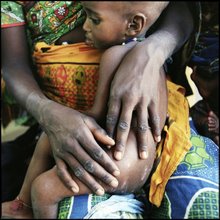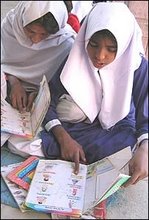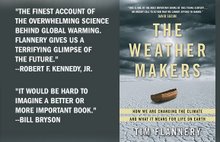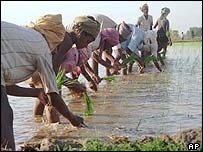PREAMBLE: Continuing from last month’s theme, linking extreme weather patterns to longer term climate change and impacts on human displacement, this month we focus more broadly on the phenomenon of disasters. Our primary sources for this material are IDMC, the Internal Displacement Monitoring Council of the Norwegian Refugee Centre, and the 2011 United Nations Global Assessment Report on Disaster Risk Reduction, both referenced below [1,3]. Our selections of material are captured verbatim, with only minor editorial amendments e.g., subheadings, paragraph breaks and use of italics, to emphasize aspects that we believe to be of interest to our readers. NOTE: This does not mean that we agree with each and every interpretation, but we do believe that the essence of the material is accurate and in the public interest. Readers who find our selection to be of value of course may visit the original documents as cited.
WHAT IS A DISASTER?
The United Nations has defined a disaster as “a serious disruption of the functioning of a society, causing widespread human, material, or environmental losses which exceed the ability of the affected society to cope using its own resources”[2]. By this definition, only those events where the losses exceed a society’s ability to cope and external aid is required constitute a disaster.
Most classifications of disaster identify two main types: natural and human-made. Natural disasters are subcategorized as sudden impact, slow-onset, and epidemic diseases; human-made disasters include two sub-categories— industrial/technological disasters and complex emergencies:
1. Sudden impact disasters include floods, earthquakes, tidal waves, tropical storms, volcanic eruptions, and landslides. Floods are most frequently associated with sudden migration of large populations and food shortages. Earthquakes cause the greatest number of deaths and overwhelming infrastructural damage.
2. Slow-onset disasters include droughts, famine, environmental degradation, deforestation, pest infestation, and desertification. These disasters are usually the result of adverse weather conditions combined with poor land use.
3. Epidemic diseases such as cholera, measles, dysentery, respiratory infections, malaria, and, increasingly, HIV, generally do not trigger large-scale displacement even during a severe outbreak although they often threaten displaced populations, especially those clustered in overcrowded and unsanitary conditions following a major disaster.
4. Industrial/technological disasters result from a society’s industrial and technological activities that lead to pollution, spillage of hazardous materials, explosions, and fires. Earthquakes, floods as well as human factors such as armed conflict may trigger secondary disasters such as fires, industrial explosions and pollution/contamination.
5. Complex emergencies are usually human-made with multiple contributing factors (e.g., war, internal conflict and natural disaster) and are marked by large-scale displacement, food insecurity, human rights violations and elevated mortality.
DISASTER TRENDS
Over the past two decades, the number of natural and technological disasters has climbed. From 1994 to 1999, reported disasters averaged 459 per year; from 2000 to 2004, this average shot up to 728 disaster events each year, with Asia experiencing the most events. Both hydro-meteorological and geophysical disasters are more common, becoming respectively 68 % and 62% more frequent between 1993 and 2003. This reflects longer-term trends:
• between 1960 and 2003, the number of reported hydro-meteorological disasters has risen x7, while geophysical disasters have risen x5
• despite the increased number of disasters, average annual death toll dropped, from over 75,000 per year (1994-1998) to 59,000 per year (1999-2003); the death toll from natural and technological disasters during 2004 soared to around 250,000, mainly due to the Indian Ocean tsunami on 26 December 2004
• numbers of people affected (people requiring immediate assistance for basic needs, injured or homeless) continued to climb; an average 250 million people per year were affected by disasters between 1994 and 2004. Disasters during 2000-2004 affected one-third more people than during 1995-1999. Over this period, the numbers of people affected by disasters in countries of low development doubled, with Africa showing the greatest increase
• that more people are being affected by disasters reflects a range of factors. Overall numbers of reported disasters are increasing, driven partly by a more variable global climate. Meanwhile, a rapid increase of population in poorer parts of the world – combined with rapid, unplanned development (particularly in urban areas) – is putting more people at risk.
Disaster Risk Reduction: The Hyogo Framework for Action 2005-2015 [1]
The World Conference on Disaster Reduction held in Hyogo, Japan, in January 2005, pledged to reduce the risks facing millions of people who are exposed to natural disasters. The 168 delegations adopted a framework for action calling on States to put DRR at the centre of political agendas and national policies. The “Hyogo Framework for Action: 2005 – 2015” aims to strengthen the capacity of disaster-prone countries to address risk and invest heavily in disaster preparedness.
The conference also adopted a declaration recommending, among other things, that a “culture of disaster prevention and resilience” must be fostered at all levels, and recognised the relationship between disaster reduction, sustainable development and poverty reduction. These non-binding documents were to serve as a “blueprint” to guide nations and individuals to build disaster-resilient communities, calling on the international community to pursue an integrated multi-hazard approach for sustainable development to reduce the incidence and severity of disasters.
Progress in implementing the Hyogo Framework for Action [1]
Disaster-related economic losses are increasing across all regions, critically threatening the economies of low-income countries and even outstripping wealth creation across many of the world’s richer nations.
The 2nd edition of the Global Assessment Report on Disaster Risk Reduction (GAR11) shows that damage to infrastructure continues to rise, especially in low- and middle-income countries where governments are still struggling to address the underlying risk drivers [1,3]. And while the risk of being killed by cyclone and floods in East Asian countries is today markedly lower than it was 20 years ago, the risk of economic loss due to floods has increased by over 160% and to tropical cyclones by 262% since 1980 in the high-income countries of the Organization for Economic Co-operation and Development (OECD). During that time, the absolute value of global GDP exposed to risk tripled from US$525.7 billion in the 1970s to US$1.6 trillion in the 2000s.
Drawing from country examples, the report highlights that since 1982 each Mexican government has absorbed disaster losses of over US$10 billion, which is now rising to almost US$20 billion in the new millennium – a clear illustration of the loss governments have to deal with in the absence of investments in disaster risk management. The GAR11 report makes the direct correlation between disaster-related economic losses and the limited investment in risk management particularly at the local level, with resulting skewed actions. On the one hand, there is good progress in early warning, preparedness and response for example, but on the other hand, countries are struggling with addressing the underlying risk drivers such as unplanned urbanization, ecosystem degradation and vulnerable livelihoods as well as critical issues such as public awareness or gender.
This current economic scenario affects all regions, and governments need to decide how they can tip the balance so that the scale of public investment no longer dwarfs current investment in disaster risk management. They must also decide now on how much risk they are willing to retain and how much they can afford to transfer. Drawing on a large volume of new and enhanced data on both risks and risk management taken from UN, governmental, civil society, scientific and academic sources, as well as from almost 100 governments and regional inter-governmental organizations about their progress in implementing the Hyogo Framework for Action, the report gives an important overview of trends and patterns in disaster risk globally and regionally. This includes analysis of new emerging risks, such as technological break-downs in highly interdependent systems, as experienced in Europe recently after the Iceland volcanic eruptions and in Japan after the Great East Japan Earthquake. The report also provides new information on earthquake mortality, which is increasing exponentially in low- and middle-income countries, and points to drought risk as mainly the product of economic decisions and social choices.
As half of humanity is now living in cities - commitment to resilience is urgently needed particularly in vulnerable groups, localities, and regions. Governments, institutions, communities and individuals need to place disaster risk reduction at the forefront of efforts to preserve and protect the balance of nature, and ensure sustainable development and well-being for generations to come. More action is needed to reduce disaster risk including supporting local governments, building on the role of women as agents of change, involving children and youth in decisions that affect their future, and fully engaging the private sector as leaders in the construction of resilient infrastructure and systems for sustainable development. Well-planned and coordinated recovery will achieve better results at lower cost, and support sustainability and disaster-resilience.
Conclusion: The imperative of disaster risk reduction [3]
Each country has its own unique risk profile or signature with different kinds and proportions of extensive, intensive and emerging risks. To reduce their risks, therefore, governments will need to adopt a mix of prospective, corrective and compensatory risk management strategies together with strategies to manage disasters and anticipate emerging risks.
Countries that have invested in strengthening their disaster management capacities have witnessed a steady decline in mortality risk, at least with respect to weather-related hazards. However, much more needs to be done to reduce economic losses fuelled by the rapid growth of asset exposure. If the objective of the Hyogo Framework for Action – the significant reduction of disaster losses – is to be achieved and if progress is to be made towards the UN’s Millenium Development Goals, a new paradigm in disaster risk reduction must emerge.
Reducing disaster risk is primarily an issue of identifying the political and economic incentives and negotiating the different trade-offs. Unfortunately, without systematically accounting for disaster impacts and comprehensively assessing the full range of risks they face, few countries have been able to find these incentives, let alone to identify the costs, benefits and trade-offs that would inform a balanced and effective portfolio of risk management strategies.
The good news is that a new paradigm is indeed emerging. It is driven by innovations in accounting for disaster losses and assessing risk, in the adaptation of development planning and public investment, and in efforts to strengthen risk governance by those governments that have recognized the importance of investing today for a safer tomorrow. An opportunity to reduce disaster risk is now appearing: learning from, building on, and scaling up these innovations; revealing risk; and redefining development.
References:
1. Norwegian Refugee Centre, Internal Displacement Monitoring Council: Training on the Protection of IDPs. http://www.internal-displacement.org/8025708F004BE3B1/(httpInfoFiles)/7CE8640E88EEB381C125711500479885/$file/Protection%20during%20module%20handout%20natural%20disaster.pdf Accessed July 15, 2011.
2. From: Risks and Rights: the Causes, Consequences and Challenges of Development-Induced Displacement, by W. Courtland Robinson, the Brookings Institution-SAIS Project on Internal Displacement, May 2003, as cited by : Norwegian Refugee Centre, Internal Displacement Monitoring Council: Training on the Protection of IDPs.
3. 2011 United Nations Global Assessment Report on Disaster Risk Reduction (GAR11). http://www.preventionweb.net/english/hyogo/gar/2011/en/home/executive.html Accessed July 15, 2011.
FROM a Great Canadian and World Statesman
"A great gulf... has... opened between man's material advance and his social and moral progress, a gulf in which he may one day be lost if it is not closed or narrowed..."
Lester B Pearson
http://nobelprize.org/nobel_prizes/peace/laureates/1957/pearson-lecture.html
INSPIRATIONAL WELCOME ............................... from T.S.Eliot's "Little Gidding"
If you came this way From the place you would come from... It would be the same at the end of the journey...
If you came, not knowing what you came for, It would be the same... And what you thought you came for Is only a shell, a husk of meaning... From which the purpose breaks only when it is fulfilled If at all.


























